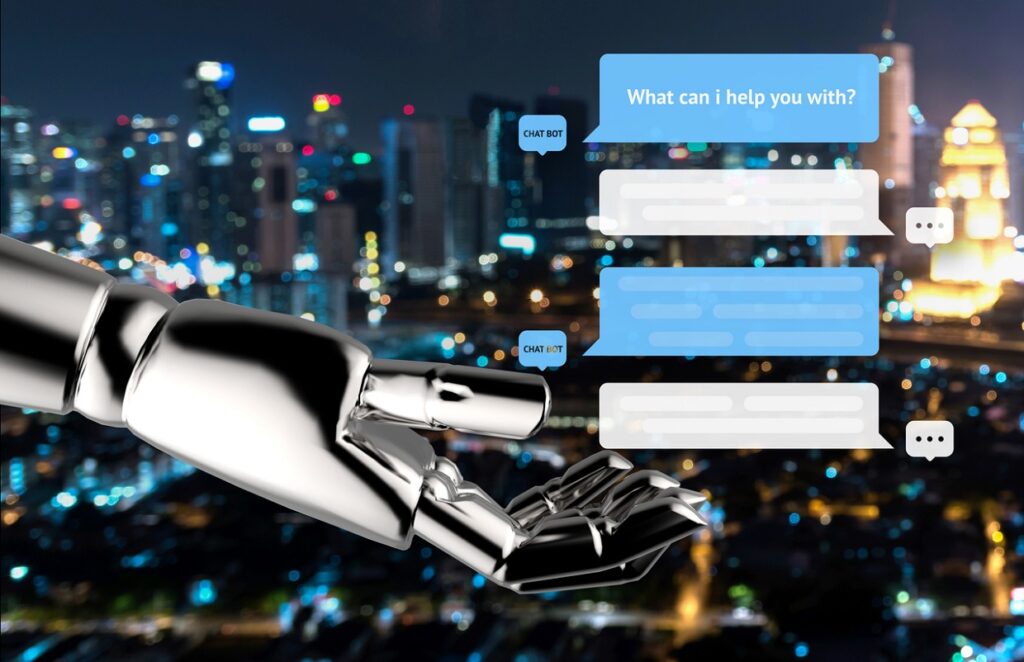Dean Withey is the Founder and CEO of ubisend, an AI company that enables brands to have on-demand, two-way conversations with their audiences. We talked to Dean about what chatbots could do to the HR function.
Jamie Lawrence, Managing Editor, HRZone: In what ways are organisations currently using chatbots in HR? Can you give some anonymised examples?
Dean Withey, CEO, Ubisend: HR chatbots are computer programmes which connect employees to company knowledge. They enable people to get the information they need from a computer in a natural, human, way.
Often, when a user logs into the CRM, employee area or intranet they have to download the employee handbook, read the benefits package or try to understand the maternity leave policy. The premise of the chatbot is simple; you type a question into a chat window, and the chatbot answers right away.
Many companies have self-service HR software solutions and most organisations are adding a chatbot on top of this platform. The clients we have developed HR chatbots for have asked for ‘fall back to human’ functionality. They want to make it clear that HR staff are still there and able to help.
We facilitate this in a number of ways. Some examples are: taking a message and notifying HR to get in contact, connecting to calendars and booking a time to meet, or simply sending the employee contact information on who the right person in HR to talk to. Every organisation is different; we build to meet their requirements.
Jamie Lawrence, Managing Editor, HRZone: All new systems have integration issues: how do these differ with chatbots and how are organisations dealing with these challenges?
Dean Withey, CEO, Ubisend: The reason why HR and internal chatbot solutions are favoured is that very little, or no, integration is required to get something up and running. Organisations are starting to see case studies and results from artificial intelligence and chatbot technology. They want to test, learn and prove the business case but can’t risk their brand or any negative impact on revenue with sales or customer service oriented solutions.
Most chatbot solutions we develop in HR start small. Perhaps just concentrating on answering questions on benefits or annual leave. There is no integration to legacy systems required – all a company needs to do is put a line of code on the website where they would like the chatbot to appear. Most often this is on an intranet or self-service HR platform.
This first HR chatbot is focused on testing, learning and proving the business case to justify further investment. It is a stepping stone towards dealing with greater problems such as communication across multi-site and multi-lingual organisations, wellness and mental health support, performance management and centralisation of knowledge.
There is a natural tendency to then look at AI solutions in more customer-facing roles.
Jamie Lawrence, Managing Editor, HRZone: Where do organisations that use HR chatbots typically see the most initial value?
Dean Withey, CEO, Ubisend: Latest research tells us that businesses can save $8bn per year by using chatbots. However, it is not just transactional saving; it also adds value while it is saving. It is a transformative technology.
The function of HR is broad and varied, from auditing and recruiting to benefits and payroll. What we see is, regardless of the chatbot’s function, it is the speeding up and making employee-HR communication more efficient that provides the initial value.
This value comes from employees asking questions through the chatbot instead of picking up the phone or emailing HR. Rather than waiting for a response from HR; the chatbot can pull information in from whatever resource it needs and answer in real-time, 24 hours a day, seven days a week.
It is based on the Pareto principle, sometimes called the 80/20 rule. The majority of inbound communication to HR comes from a small number of similar enquiries. The chatbot is designed to answer these low hanging fruit questions immediately.
It enables the employees with important or critical queries and who need real human interaction to meet with someone who has the time to talk because their routine has been made more efficient.
The immediate value is through this time-saving (of both HR and employee) and in the centralisation of up-to-date information. Later, additional value comes via the data the chatbot gathers.
For example, the data helps with auditing, performance management, early detection of welfare and medical issues and enabling HR to envision and plan for the future.
Jamie Lawrence, Managing Editor, HRZone: What’s the most innovative example you have of an HR chatbot?
Dean Withey, CEO, Ubisend: The most innovative chatbots share the common features of service provision and reliability and giving people what they want when they need it. HR chatbots are no different to any others in this respect.
The innovation comes from the subtlety, the lowering of friction in the dissemination and centralisation of an organisation’s knowledge. It is in the ability to solve problems and connect people with information in a time, and cost, effective way.
It is not a transactional solution; it is transformative. A well-designed and adopted chatbot empowers and improves internal communication across business units, sites, languages and industries.
Jamie Lawrence, Managing Editor, HRZone: Chatbots are new, and employees/consumers are not always comfortable with them: how can organisations help overcome this reluctance and establish them as ‘part of the furniture?’
Dean Withey, CEO, Ubisend: Change is disruptive; this is just like all change management issues and requires integration and a coordinated approach. There are benefits and risks of all new technology. What organisations cannot do is stand in the way or stop it, after all, you cannot get the toothpaste back in the tube. It is about how organisations effectively manage and deal with the transition.
Adopting a chatbot is not a binary decision, it is not ‘talk to the chatbot or HR’. For the employees who want to use the chatbot to get their questions answered immediately, they absolutely can.
If a chatbot is done well, employees will want to talk to it as it is a very natural way of communicating and is deliberately designed to be as close to human interaction as possible. For those who do not want to interact that way, there’s still the phone – the chatbot does not take it away!
On a functionality level, it is the blending of a computer with a human that has the greatest effect. Utilising the quick response and efficiency of the machine but being able to facilitate human to human interaction is key. What we find is that once employees are used to getting speedy and reliable answers they start choosing to use the chatbot, but it certainly isn’t imposed on anyone.







One Response
Thank you Dean and Jamie for
Thank you Dean and Jamie for a thought-provoking interview! I’d love to talk to you more about the implications of the AI tech sitting on top of HR solutions. Some strong points made here – and I’d challenge some of those – but I can see that it’s not too long before we should be assuming that an HR UX for our employees is to include a chatbot service. Quite right about the low-hanging fruit of HR transactions! Not so sure therefore we can argue that the bot itself isn’t transactional. And massive potential value if the (e.g.) ubisend tech can return me, as an HR leader, the transactional data as behavioural insight. Interesting tech times ahead!